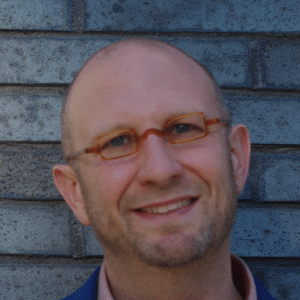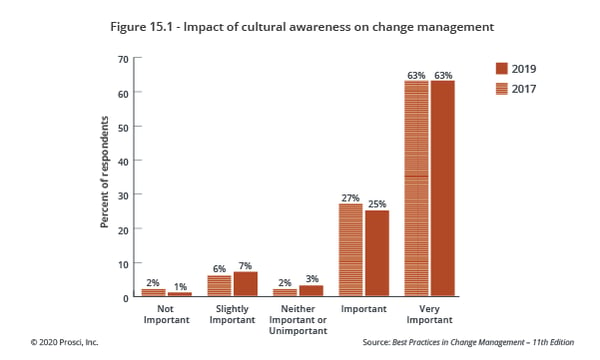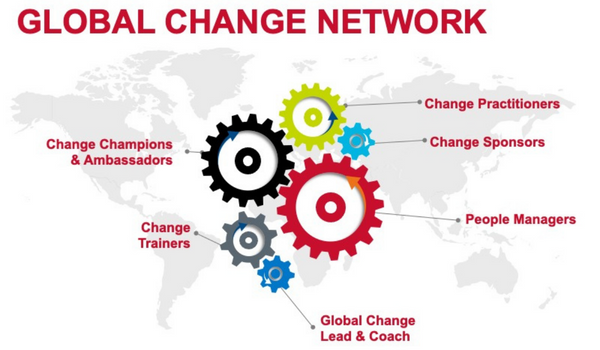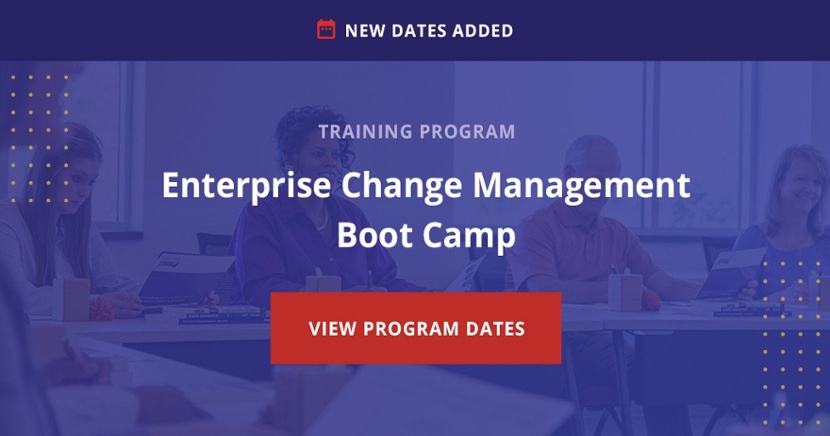Building a Global Change Ambassador Network at Matthews International

6 Mins
Updated: October 25, 2023
Published: October 26, 2022

In a global organization like Matthews International, getting organizational changes embedded, improved and vetted effectively across distributed and highly diverse cultures is a challenge, especially while supporting hundreds of individuals impacted by numerous big changes. If you face similar issues, you may find that “change ambassadors” can do this important work for you and enable your organization to achieve stronger, more people-focused results.
Building Enterprise Change Capability
at Matthews International
Matthews International is a global leader in branding solutions, memorialization products and solutions, and industrial technology. Upon starting our journey to build enterprise change management competency across the organization, we realized that significant differences—across regions and local cultures, varied products and markets, and unique toolsets and systems—impacted the way the teams deployed and delivered change management. Creating a network of influential ambassadors and champions in each region enabled us to address all these issues while greatly expanding our change capacity and competency.
Is enterprise change management on your organization's radar?
Prosci can help you kick-start your early efforts and support you throughout your journey.
Global Change With a Regional Approach
To understand the challenges we faced, consider our global branding organization, SGK Brand Solutions. The sun literally never sets on their work. They can start a project in the U.S., pass it to Japan, then move it on to India or Germany. That requires a lot of collaboration and engagement, with everyone using the same terms. So, when we roll out new software, we really need to understand concepts and use things in the same way.
But it’s more complicated than dealing with time zones. How can we better understand the individual employee’s plight in other parts of the world and within the unique businesses at Matthews International? A change leader in Minneapolis tends to think of change impacts through a Midwestern U.S. lens, which is not relevant to the impacted employee in Penang. That got us thinking about how we can localize change management.
Research on Regional Differences
in Change Management
Prosci’s research shows that organizations all over the world are feeling the impacts of cultural awareness on their efforts to deploy change management.
 As we began our work, Prosci research helped us understand that we needed to customize and adapt our change management approaches to local cultures and really avoid those culture-specific obstacles that spur resistance and other barriers to change. We also needed to think through communication types and content to make sure the messages we sent were received as intended in every region.
As we began our work, Prosci research helped us understand that we needed to customize and adapt our change management approaches to local cultures and really avoid those culture-specific obstacles that spur resistance and other barriers to change. We also needed to think through communication types and content to make sure the messages we sent were received as intended in every region.
Certain change management approaches don’t work well with all cultures. For example, we know that active and visible sponsorship is critical to successful change, and senior leaders are the preferred senders of messages about the business reasons for a change.
But Prosci research tells us that in Asia, it’s uncommon for leaders to engage directly with employees, which means we should look at local approaches to the ways we engage across groups. In parts of Europe, some face-to-face engagement can be less effective because sharing emotional responses to change falls outside accepted norms. And the research reveals that in Canada, individuals may favor self-management and individual responsibility, so we need to adapt communications to ensure that our messages land as intended. While these collective insights may or may not have applied to Matthews International, they served as valuable context for starting to understand regional differences in people and cultures.
How to Start a Change Ambassador Network
As global demand for change management grew at Matthews International, we quickly realized that we needed to build out a network of regional change ambassadors and change champions to support our team of change practitioners, executive sponsors and people managers. The purpose of our network is to contextualize strategy, localize communication, accelerate change, understand employee sentiment, and serve as a feedback mechanism.
 Example Structure: Global Change Ambassador Network
Example Structure: Global Change Ambassador Network
We began to rollout our network in support of a multi-year, large global initiative with numerous projects that had global or regional impacts. Here’s how we got started.
1. Develop the approach
As a Prosci Certified Train-the-Trainer, Prosci Certified Advanced Instructor, and license holder, I’m able to apply Prosci training courses at Matthew’s International. So, I applied many concepts from the Leading Your Teams Through Change training program, which is intended for people managers who work with direct reports. Starting with a small team of practitioners, we adapted the content to equip individuals as “change ambassadors” to influence a wider audience of employees and stakeholders.
2. Select and train regional change ambassadors
We asked site leads and other individuals at different locations to identify the most influential people in their locations. These ambassadors are the boots on the ground, the rock stars who know how to get things done, and they’re credible with managers and the people they need to influence. Even though these change ambassadors are not always people managers, they execute a modified version of the CLARC roles of people managers. To be a good fit for the ambassador role, the regional change ambassadors must also be able to translate the ADKAR Model and other change concepts into local languages, and help us adapt them in ways that are relevant to the local organization and culture.

3. Select and train regional change champions
Our change champions are the localized sponsorship needed for credibility and success—the site leaders and other higher ups who have a voice in the organization and can help ensure that the ambassador’s time and efforts got prioritized. Among other characteristics, they must be trusted by leaders and employees, able to manage stakeholders, and have solid communication skills. Regional change champions establish and take ownership for the ambassador network in their area.
4. Transfer knowledge with a keen eye for bias
Once you have the people in place, you must transfer the knowledge they need to be successful in their ambassador and champion roles. In our case, I went to each region, trained people on their modified CLARC roles, and then facilitated the process of helping them choose the most effective ways to communicate, liaise, manage resistance, and so on. But before we ever take action, we need to look closely at the translated training content with an eye for bias. Does it make sense locally, or are people going to read into it in an unintended way? The change ambassadors are indispensable collaborators in this work.
5. Understand needed cultural shifts and adapt
At this point, we start looking at the cultural shifts we need to make based on the different dimensions of national culture, including how to go about our communications and certain other aspects of launching changes that may not work effectively in all regions.
Consider the aspect of assertiveness versus being more modest. If the change team comes from a very assertive culture, we may need to take a different approach with people in modest cultures. And we might need to adjust again in another part of the world. Prosci’s research helps us better understand how we are going to engage with different cultural groups. And then we work with change ambassadors to check our research-based assumptions against the realities of the local organization and culture.
How Change Ambassadors Help
Fulfill the CLARC Roles
In addition to the ability to manage change with less bias, understand local social conventions, and translate more effectively in local languages, we access a deeper understanding of changes going on in each region by having influencers execute a modified set of CLARC roles in their roles as ambassadors.
Each of our global locations may have multiple change ambassadors who take on just one or a few adapted CLARC roles:
- Communicator – supports leaders in cascading information locally to “make it real”
- Liaison – gathers employee sentiment and provides feedback on success (e.g., are they skirting the system or adopting the change incorrectly?)
- Advocate – is supportive of the change, can envision the future state, and helps others build the vision locally
- Resistance manager – helps us understand where the resistant behaviors are coming from, so the people managers or other organizational leaders can take steps to help people move through their transitions
- Coach – is a super-user of new tools in their regions and supports individuals to support building knowledge and ability

3 Successes Enabled by a
Global Change Ambassador Network
Matthews International has had many successes with change through the global change ambassador network, some of which I was not involved with, which makes me especially proud. Here’s a small sample:
Global rebranding initiative
This initiative brought sister organizations and their well-known brands under one new umbrella. The global effort required a new go-to-market strategy, new identity (e.g., website, assets, sales collateral, etc.), and training of all employees. From a people perspective, it was painful because their hearts were attached to the organization they came from and brands they had worked to create. Our change ambassadors worked locally to give each region the flexibility to conduct changes in the ways they found appropriate. The result was a successful soft launch with high levels of unity and adoption among formerly resistant groups, as well as positive client feedback and a stronger-than-ever sales funnel.
International IT project
A major project in a large global portfolio of related changes, this IT project merged legacy technology, tools and processes at regional sites into the global service desk. Regional change ambassadors and champions vetted all project plans, and change champions delivered the communications and town halls, to ensure relevance. Local change ambassadors also delivered training hosted with change champions to answer questions. The project achieved planned objectives, despite COVID-19 restrictions on travel.
Supporting DEI
Whenever we embed changes regionally, we engage with our change ambassadors and champions. It’s especially helpful with Diversity, Equity and Inclusion (DEI) because of its highly personal and sensitive nature. We have to get it right. For this initiative, existing change ambassadors self-selected to participate on work around DEI. These individuals are passionate about DEI, so we've tapped into them and are giving them the ability to play the modified CLARC roles around DEI. But first, we're giving them some in-depth knowledge and training about what diversity is, what inclusion is, what this works means in general, so they can then go in and understand how to engage with the unique people and cultures in their local organizations.
Benefits of a
Global Change Ambassador Network
When you work in global organization, you always have to be cognizant of your own local bias, especially when it comes to change because people can read into it. As change leaders building enterprise change capability, we do want approaches to be harmonious across the whole business unit, organization, or the whole globe. And yet people are inherently different. People are going to hear what you say differently and react to it differently. And you may be completely biased and blind to the fact that it's happening. If you are, you'll go down a rat trap and may not get what you want, even if you do all the change management effectively. This insight and the ability to address it are the undeniable benefits of having a global change ambassador network.



